An interview with sought-after curator Maria Cristina Didero
Scene Maker
Over the past few years, we’ve noticed one name repeatedly cross our desks: Maria Cristina Didero. In fact, as each new design season gets into swing, over and over again, we find that the exhibitions we’re most intrigued by are all connected by this one woman.
A self-taught design expert, the oh-so-charming, whip-smart Didero is a highly sought-after independent curator who’s organized an astounding number of thoughtful and beautifully executed design projects in the past decade. Her who’s-who list of collaborators includes the likes of , Ross Lovegrove, Philippe Malouin, Atelier Biagetti, Carlo Massoud, and Stephen Burks, among many others. Last week at the Design Museum Holon, she opened her latest exhibition, Nendo: The Space in Between, one of the most anticipated design shows of the year.
Didero’s projects are consistently at the leading edge of the contemporary design conversation, often visually dramatic and always poetic and enticing. She is especially passionate about the Radical Design movement of the 1960s—an era recently enjoying a renaissance—but her exhibitions investigate an eclectic roster of designers and styles. As Didero herself says, “I strongly believe that in the design world, people and personalities are far more important than the objects that they produce.”
She is also beloved; designers who work with her can’t seem to get enough. Alberto Biagetti and Laura Baldassari of Milan’s Atelier Biagetti have collaborated with Didero on multiple projects; they note: “Maria Cristina has an amazing intuition for innovation that makes her a step ahead of the rest on the international design scene. She is a courageous pioneer—and 100% made-in-Italy, making her a fantastic example of an Italian talent at the forefront of her sector.”
Welsh designer Ross Lovegrove concurs. “I collaborated with Maria Cristina for my exhibition ENDLESS at Cardi Black Box in Milano some years ago. She was totally responsible for making this exhibition possible and for realizing a show without compromise. She understands so well the relationship between Designer-Artist, which is quite a new condition. She is a champion of the designer’s ability to abstract and resonate concepts beyond the industrial or commercial.”
And Philippe Malouin says, “From the very first moment I met Maria Cristina, I knew that it was going to be a joy working with her. Maria-Cristina is extremely enthusiastic about a designer’s ideas, and the show we created together was part of an ongoing conversation that allowed us to create what ‘simple’ has become. These conversations took me to conclusions I would not have made on my own, and made the pieces in the show more interesting. This remains one of my most joyful and inspiring collaborations.”
In addition to her work as an independent curator, Didero is an accomplished journalist and a former Executive Director of the Fondazione Bisazza. She also oversaw the Vitra Design Museum’s institutional relationships in Italy for over a decade.
We recently had the pleasure of a sit-down with Didero. Read on to get to know one of the key figures helping to define the design world today.
Anna Carnick: Where did you grow up?
Maria Cristina Didero: I grew up in Rimini, on the Italian east coast, a city that is stereotypically linked to entertainment, fun, sport, and food. Rimini is a temporal space, a tourist destination where people come to spend a few days, have their minds blown, and then leave. I think from there I learned the true meaning of a few important words: euphoria, eye-catching, impermanence, and excitement. And I’ve worked hard to find a way to either get along with or get away from these words in my own life.
AC: Looking back, do you think your upbringing prepared you in any specific ways for the professional role you have today?
MCD: I’ve always been passionate about design, but I have a humanities background, nothing related to the subject. Academically, I had no specific training to do what I do; when I was in school, the profession of curator was not even on the map in Italy. In fact, still today we have no real classification for my job—which means it’s hard to describe exactly what you do to your aunt when you meet her for Christmas. Same thing for the formal Italian work classification; this is why I’m actually registered as a journalist.
I learned my lessons on the ground, which allowed me to move without prejudice while studying the subject by myself. My studies at the University of Bologna had no connection to the discipline; I independently cultivated a passion for design, choosing a point of view without setting aside history or facts. I believe that in work, as in studies, freedom is the most demanding of privileges.
AC: What initially drew you to the design world? Was there a particular moment or project that first inspired you or drew you in?
MCD: My real first encounter with the design world goes back to my first meeting with Alexander von Vegesack, founder of the Vitra Design Museum and, at that time, director of the institution. I ultimately had the chance to work in close collaboration with him at Vitra for almost 14 years. It was an endless learning experience and a lot of fun.
AC: How has the discipline of design enriched your life specifically?
MCD: Design is everywhere; this goes without saying. But for me design is not necessarily about objects; rather, it’s a state of mind. Of course I like to understand how things are made, even the seemingly mundane—these are often the most interesting objects. I have to practice everyday to not become a complete maniac, though: I peek beneath benches at the airport, I keep the best designed boarding passes from flights, I come back from my trips with all sorts of artisanal tools. I even have a flourishing collection of empty plastic water bottles, which began as a joke to search for the one that was best designed for shape and decoration, but it just continues to grow!
AC: Are there any individuals you’d identify as mentors?
MCD: I’m not sure mentors is the right word, but for sure I’ve been lucky to meet a lot of great people who helped shape my views. As I said before, von Vegesack, but also [Greek Cypriot industrialist and art collector] Dakis Joannou, who passed on to me his unique passion for Radical Design; it invaded my ideas in an epidemic way.
AC: Congratulations on the beautiful, recently launched Nendo exhibition in Tel Aviv. What initially drew you to the Nendo project and the Design Museum Holon?
MCD: The museum’s chief curator, Galit Gaon, invited me to curate a project, and I was pleased to collaborate with her. After awhile, she asked me if I had any interest in Nendo and if I wanted to be in charge of a Nendo solo show there, which would be the first museum-like presentation of the studio’s work. I had met [Nendo designer] Oki Sato a few times in Milan for different reasons, and I was happy to accept—and wonderfully Oki was on the same page.
Moreover, for a curator, the idea of putting some order to the super-prolific—and high quality—work of Nendo was a real challenge. I wanted to tell the story of the studio from the beginning up to now, but could we call it a real retrospective if we were focusing on someone who is not even 40 years old with a studio founded only 14 years ago? So we made up the narrative expedient of “in between” to tell this story. And Oki responded with the excellence that distinguishes him in every single project he delivers.
AC: What is it about Nendo’s work that excites you?
MCD: I strongly believe that in the design world people and personalities are far more important than the objects that they produce. Of course, they have to deliver interesting projects, too. I’m always looking for objects with a certain degree of poetry and a strong story. Oki is a special person with a strong dose of creativity—also with an incredible discipline for productivity—which I have never experienced before. Creativity and strict organization made him a unique designer and allow him and the studio to pursue several different projects at once. He’s so busy that I’m still not really sure—even after a year and a half of preparations for the show—if he sleeps at night.
AC: What can you tell us about your upcoming project on Radical Design?
MCD: A few years ago, I happened to meet Zesty Meyers, one of the partners behind NYC design gallery R & Company. We started talking and a few great ideas came about quickly. At that moment, I happened to be writing for 1968, a publication by [Italian artist] Maurizio Cattelan and [Italian photographer] Pierpaolo Ferrari on Dakis Joannou’s outstanding Radical Design collection. That book redefined the image of the most iconic Radical Design pieces from that very special year. Zesty told me that his gallery was strongly involved with Italian Radical Design. I soon also met Evan Snyderman—Zesty’s partner at the gallery—and since then, for more than two and a half years, we have been completely immersed in our collaborative project: Titled SUPER DESIGN, it will be composed of an exhibition, a book, and a film, including several video-interviews with the protagonists of that period. Evan and I both felt that the stories of these crucial talents needed to be recorded and archived, and therefore I asked [Italian producer] Francesca Molteni to direct this documentary. And I am very happy we did, as it is coming along very well! Fingers crossed, though, as we have some more work to do!
AC: Radical Design seems to be getting its proper due presently, both in exhibitions and as a broader reference for designers working today. Why do you think Radical Design is having such a renaissance right now?
MCD: That specific period in time was a shower of freedom and beliefs. They really wanted to change the world, from its roots. And they believed so strongly that they could achieve such a change that they actually did in a way. The radicals not only shocked the status quo; they also changed the way we can think of architecture and design forever. I think some of their vision—some of their spirit, some of their ambition—would be so helpful in the world today. It makes sense that they appeal to so many today, as they have become such a symbol of power and passion.
AC: What’s your take on the resurgence of craft and the handmade? For example, is it a direct response to the ongoing digital revolution?
MCD: I believe the world needs a counterpoint to the pace of digital media, indeed. And there’s presently a certain cultural horizontality that spans gastronomy to fashion; there’s an ongoing deeper research for pure and original things. Globalization had to come, but it changes few romantic habits in all of us. For example, the day they opened the Ladurée [a famed Parisian patisserie known for its macaroons] outlet in Milan, I was so sad. I do not want to go near Piazza Duomo to get a macaroon. I love idea of a special pastry only available in one place, something you cannot have everyday—the romance of the wait, the growth of desire, the struggle even to get to the moment when you’re finally in Place de la Madeleine! I understand this is an old fashion-attitude and that things change, sometimes not for the best. Anyhow, I do love Ladurée, wherever it is now!
AC: What do you predict the next resurgence will be?
MCD: I don’t have a crystal ball with me, but I would love for it to be Bauhaus or Art Déco.
AC: Who do you think is the most exciting designer working today and why?
MCD: Of course I will avoid mentioning all the designers I have already had the joy of working with, as I feel working together on projects is already a statement about how deeply I admire them. So I will choose somebody I would like to work in the future: Michael Anastassiades.
AC: Which designer, living or dead, would you most love to share a long dinner with?
MCD: Maybe I could do that with Anastassiades, so we can talk about a future show together! Though I would also love to go out for dinner with Joe Colombo. We could have a quiet but chatty evening, drinking from his beautiful glasses and smoking some cigarettes. We would probably sit in a restaurant with none of his Elda Chairs—the most comfortable and embracing chair ever designed—but sitting on an uncomfortable one would help maintain a slow-paced conversation. If we were back in his time, I would ask him to predict the future, maybe over a long game of chess.
AC: What else are you working on right now?
MCD: In addition to Nendo’s show, on July 9th we will open a sweet and romantic exhibition at the Museum of Applied Arts in Dresden. The title is FRIENDS (+Design), and it will be co-curated by myself and Tulga Beyerle. We selected three groups of designers who are really close friends in life, and we asked them to each develop a project together.
Each group received a separate brief. The first group is composed of Michael Young, Jerszy Seymour, and Richard Hutton, and they have been asked to develop a piece of work together—using three brains and six hands. The second group is composed of Mathias Hahn and Tomas Alonso, and they have to come up with a gift for one another. We are sure the result will be surprising and touching. Then there are Philippe Malouin and Bethan Laura Wood, another exciting combination since they have spent some time together in Domaine de Boisbuchet (France) and also got pretend-married there. In their case, we’ve asked them to imagine that Philippe is helping Bethan out on a project, because Bethan is incapable of finishing or delivering for any given reason—and vice versa. So the idea is to pretend to be the other and work with the language of the other. One could also call it an interpretation of the other’s work. This is a tall order, as they have two very different languages of expression.
And of course, Tulga Beyerle and I are also close friends. We have spent some time all together, and we really enjoy the groups. This project bears some special meaning for me: FRIENDS challenges the ultra-competitive system of the design world today; it is an honest, anti-skeptical exhibition that shows how another world is possible. It is an antidote to the cynicism of commerce and financial relationships. After the 9th of July I will take a hopefully deserved break—though I’ll keep working on the radical show with R & Company and a few other projects that I’ve promised to keep secret still . . .
AC: You’ve worked with such an outstanding roster of designers through the course of your career. If you had to come up with just a single word or short phrase to describes the following people—all of whom you’ve collaborated with—what would that be?
MCD: So fun! I’d say:
-Ross Lovegrove: The future is now.
-Ron Gilad: Think deep.
-Carlo Massoud: When instinct meets design. (He is everything related to spontaneous creativity and strong passion. We will hear more on him soon!)
-Gala Fernández Montero: A Spanish designer with a pirate attitude. She just jumps into projects with zero fear.
-Atelier Biagetti: Design is the strongest means to investigate reality.
-Philippe Malouin: Simple and sophisticated. (Philippe is one of the most talented designers on the scene and a great-normal human being. Nothing more needs be said.)
-Michael Young: When technology is finally a means and not an end. (Michael is special in everything he does. What strikes me most about him is the ease with which he conceives super-elaborate projects with articulated manufacturing—as well as his continuous testing of new technologies to push boundaries.)
-Studio Mischer’Traxler: The love of process and the process of love. (They are the most incredible couple. They are not only amazing designers; they also have such balance as human beings. In that sense, for me, they also represent the process of love.)
-
Interview by
-
Anna Carnick
Anna is Pamono’s Managing Editor. Her writing has appeared in several arts and culture publications, and she's edited over 20 books. Anna loves celebrating great artists, and seriously enjoys a good picnic.
-
More to Love
Little Sculpture #4 by Gala Fernández

Little Sculpture #3 by Gala Fernández

Little Sculpture #2 by Gala Fernández
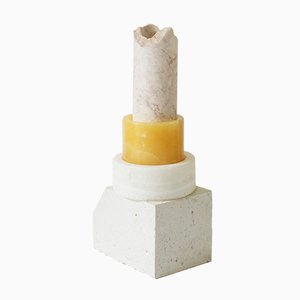
Little Sculpture #8 by Gala Fernández

Oneoff 2 Light by Gala Fernández for Real Fábrica de Cristales de La Granja
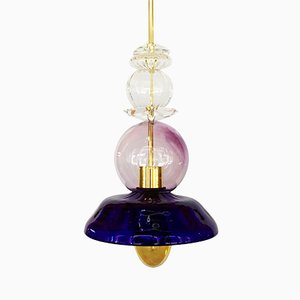
Out of the Cage (Turquoise 2) by Gala Fernandez

Out of the Cage (Blue) by Gala Fernandez
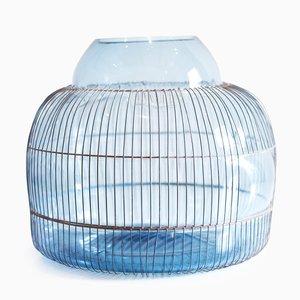
Little Sculpture #7 by Gala Fernández

Little Sculpture #9 by Gala Fernandez
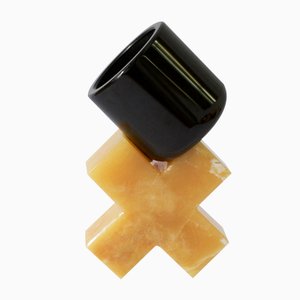
Little Sculpture #22 by Gala Fernández
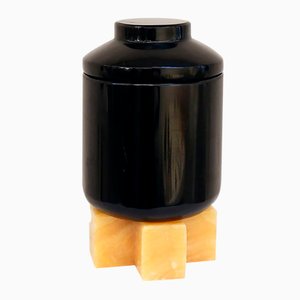
Gold Metal Rock S4 Side Table by Michael Young for Veerle Verbakel Gallery, 2016
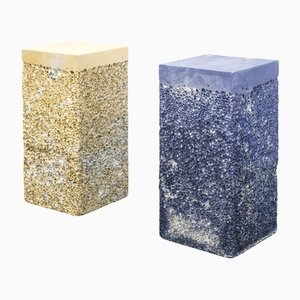
Metal Rock SH2 Stool by Michael Young for Veerle Verbakel Gallery, 2016

Metal Rock SH3 Stool by Michael Young for Veerle Verbakel Gallery, 2016

Metal Rock MT Blue or Gold by Michael Young for Veerle Verbakel Gallery, 2016

Metal Rock R3 Blue or Gold by Michael Young for Veerle Verbakel Gallery, 2016
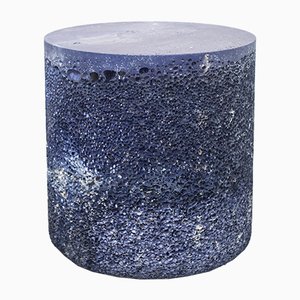
Little Sculpture #21 by Gala Fernández

Little Sculpture #10 by Gala Fernández
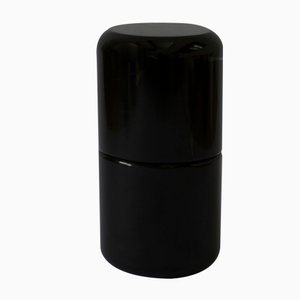
Little Sculpture #20 by Gala Fernández
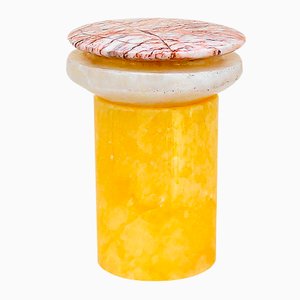
Little Sculpture #19 by Gala Fernández

Little Sculpture #18 by Gala Fernàndez

Little Sculpture #17 by Gala Fernández
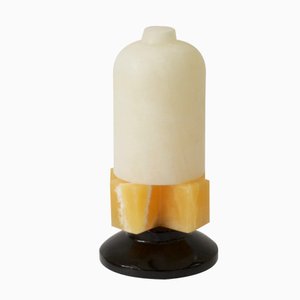
Little Sculpture #16 by Gala Fernández
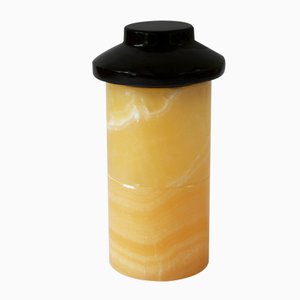
Little Sculpture #15 by Gala Fernández

Little Sculpture #14 by Gala Fernández

Little Sculpture #13 by Gala Fernández

Little Sculpture #12 by Gala Fernández

Little Sculpture #11 by Gala Fernández
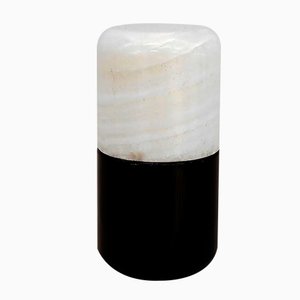
Out of the Cage (Yellow) by Gala Fernandez
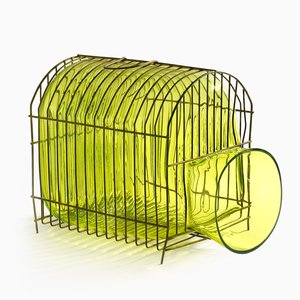
Out of the Cage (Amber Vase) by Gala Fernandez

Out of the Cage (Blue Vase) by Gala Fernandez
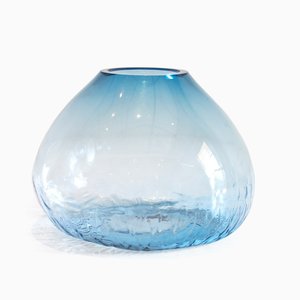
Out of the Cage (Turquoise Pagoda) by Gala Fernández
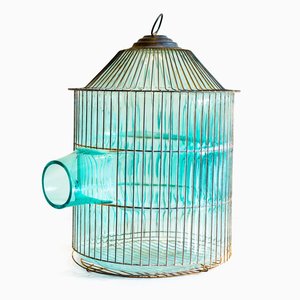
Lete Sospensione Pendant Lamp by A. Anastasios for Artemide
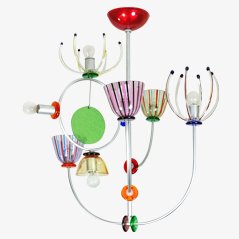
Out of the Cage (Red 2) by Gala Fernandez
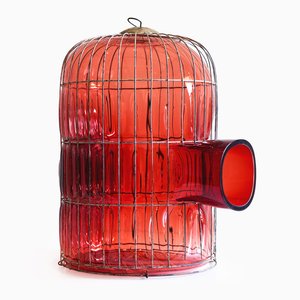
Out of the Cage (Red 1) by Gala Fernandez


